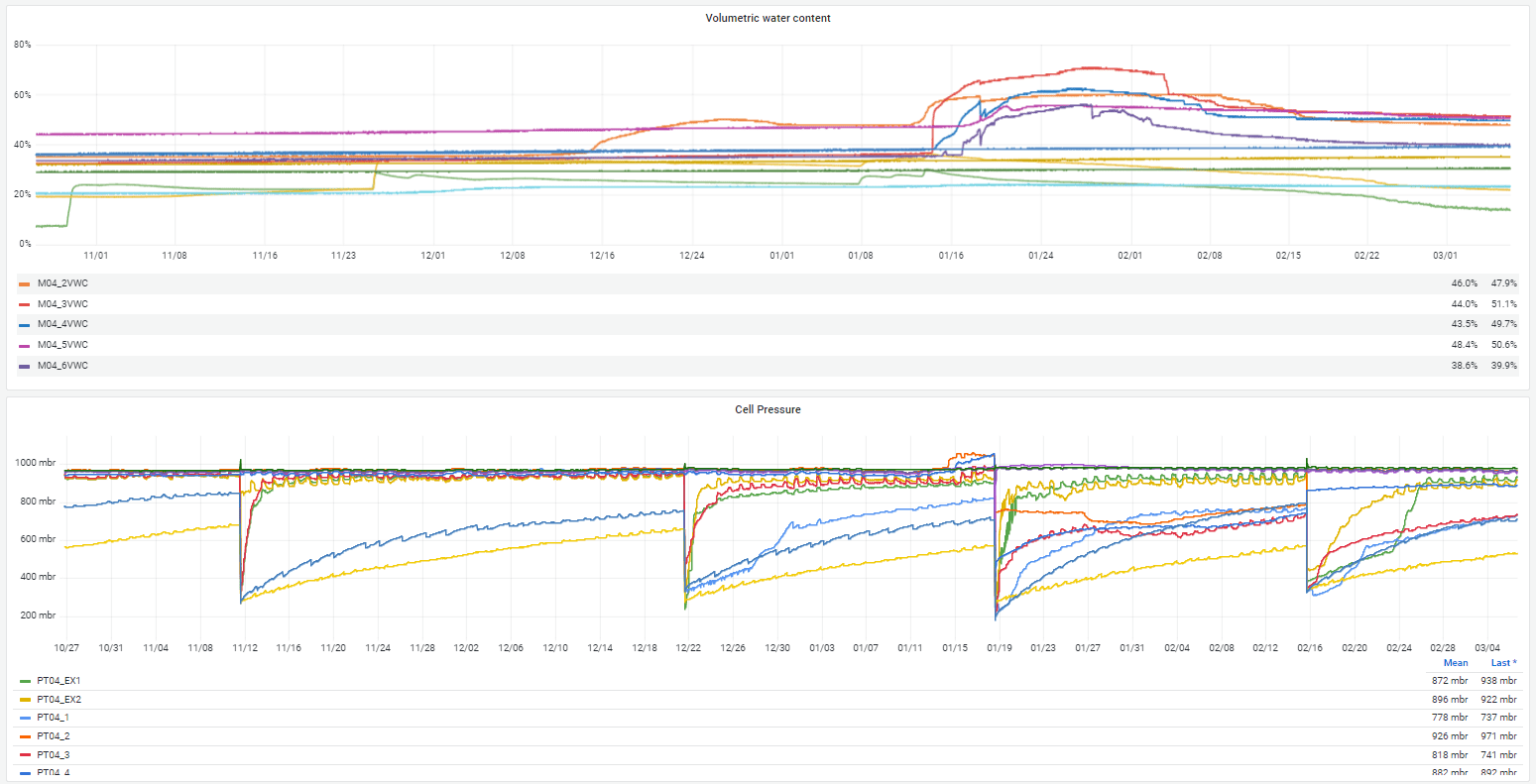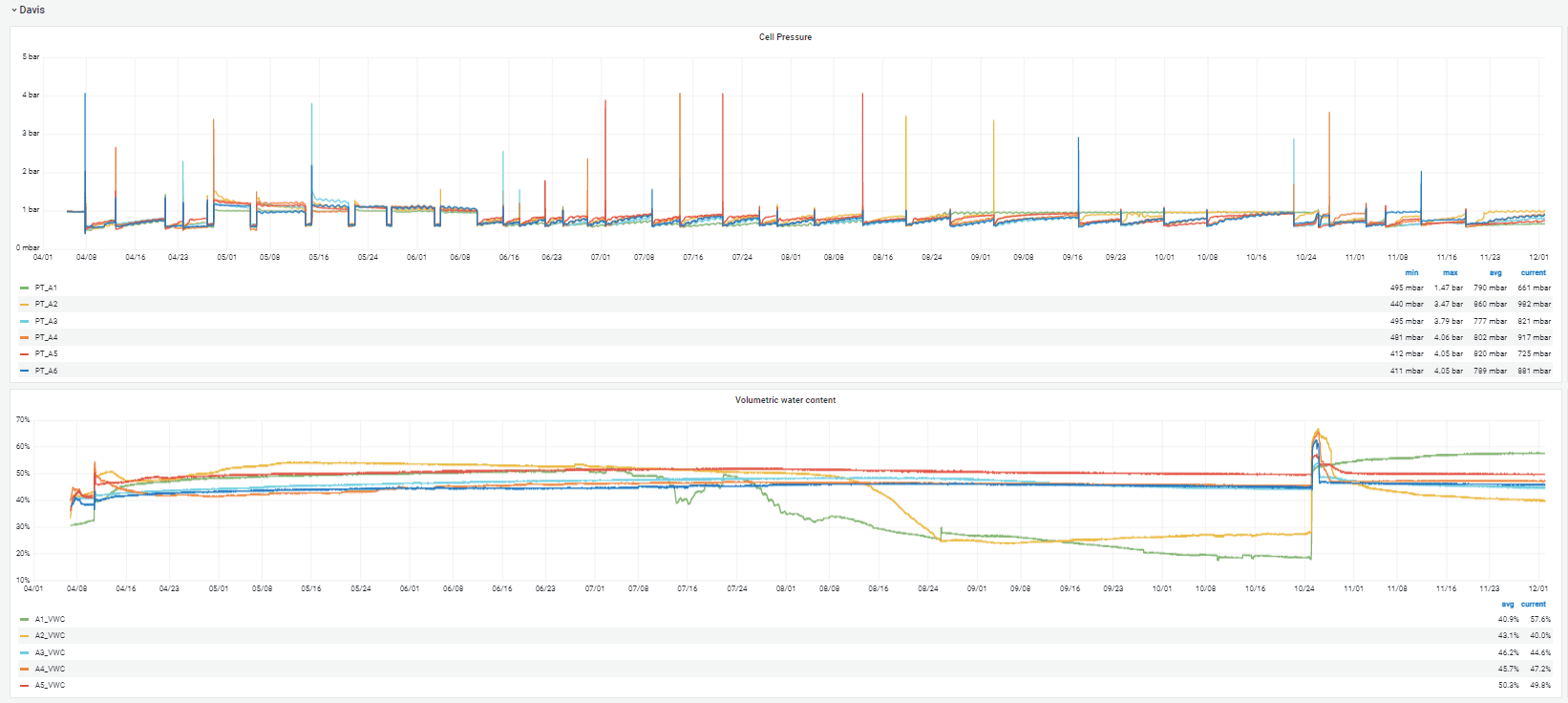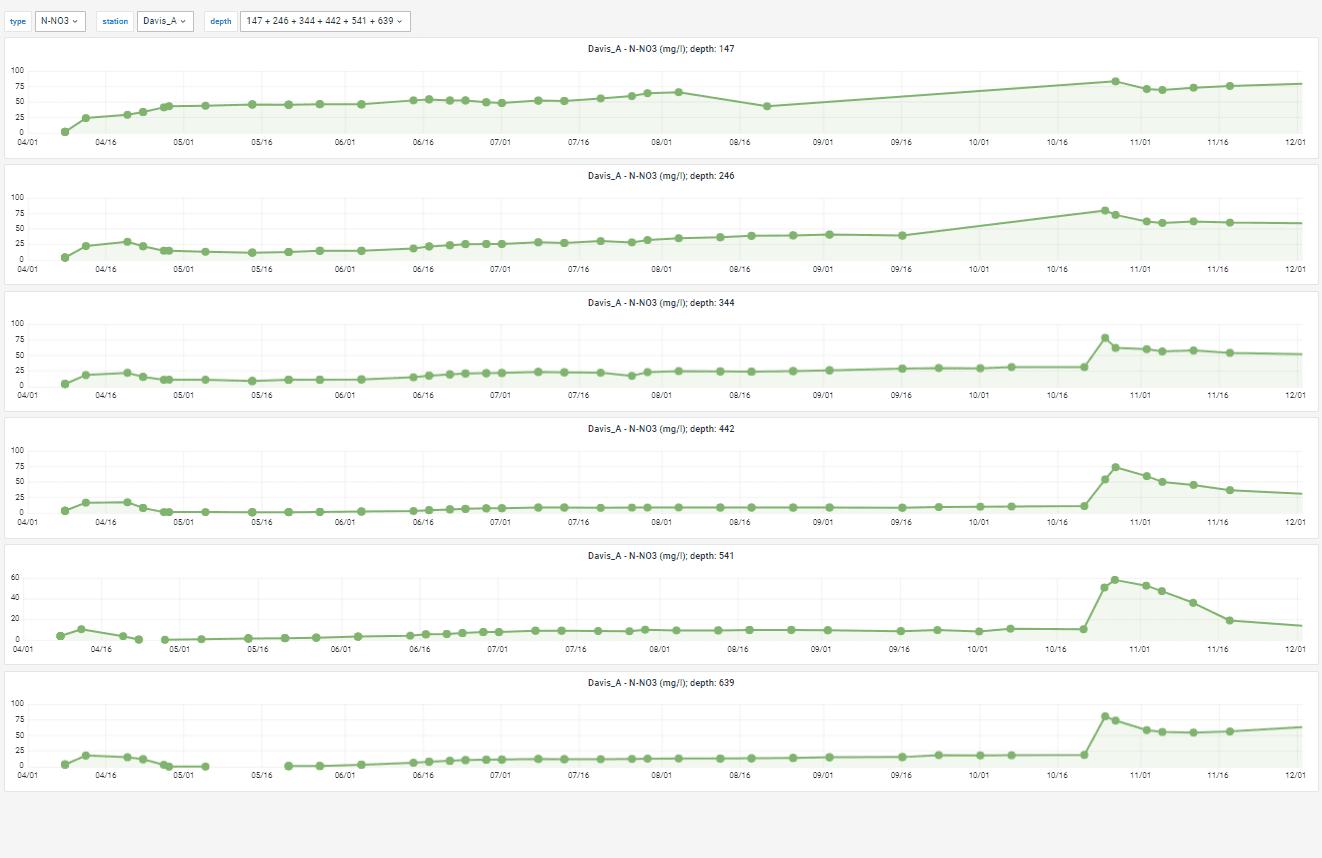Home » Data & Analyses
Real-time data
and analytics
for smart decisions
Real-time data and analytics for smart decisions
VMS real-time data on sub-surface hydrological and chemical properties is valuable for a multitude of organisations, determined to protect groundwater and the environment.
Gathering unique and vital information via the VMS enables insights into the hydrological processes that dictate sub-surface water resource quality. The clear visibility of sub-surface processes provided by Sensoil’s VMS, empowers users with smart tools and accurate information otherwise unavailable.
Environmental operational adjustments are made on the basis of scientifically-based, factual real-time data. The VMS technology has been developed and tested in multiple scientific research studies.
VMS monitoring networks provide smart solutions to address a variety of environmental challenges including agriculture, mining, levees and earthen dams, landfills and remediation processes.
Most importantly, groundwater can be protected.
2022 was designated by the UN IGRAC (International Groundwater Resources Assessment Centre) as “making the invisible visible: 2022, the year of groundwater”.
This is exactly what we, at Sensoil, have been doing for a decade, and will continue to do.
Real-time Data and Sampling from the Unsaturated Zone
Unsaturated Zone Monitoring Network for The Energy and Water Agency Water Services Corporation, Malta
Rainwater infiltration, which eventually turns into groundwater recharge, is reflected through variations in water content of the sediment across the unsaturated zone. Precipitation on land surface induces wetting fronts that propagate down from the top soil across the unsaturated zone to the water table.
Analysis of the wetting and drainage processes across the vadose zone provide direct measurement of the actual water flow velocities and fluxes, across the unsaturated zone. Thus, direct assessment of the final groundwater recharge is provided.
The example below presents actual data on variations in water content across a 20m deep unsaturated zone throughout the winter rainy season in a site located in Malta. In addition, continuous data on the system pressure (below) enables real time monitoring of the system’s vitality and capability to collect liquid water samples for chemical and isotopic analysis.
Land, Air & Water Resources, The Sustainable Agricultural Water Management Research Group, UC Davis, CA, USA
Along with the capability to measure the temporal variations of the unsaturated zones’ hydraulic conditions, the VMS enable frequent sampling of the sediment pore-water for chemical analysis. Water samples collected by the VMS from multiple depths at specified time resolutions provide direct indication re the quality of the water percolating from land surface and finally recharging the groundwater. Accordingly, continuous information on the chemical composition of the water percolating across the unsaturated zone is essential for proper land-use management and prevention of water resources pollution. Moreover, real-time information on the chemical properties of the unsaturated zone enables optimization of remediation strategies of contaminated sites.
The data example below presents variations in nitrate concentration across the unsaturated zone of an agricultural site in California, USA. Synchronous analysis of agricultural regime, in terms of irrigation and fertilization, with the temporal variation in nitrate concentration across the unsaturated zone, enables direct measurement of the fertilization efficiency and groundwater pollution potential.


